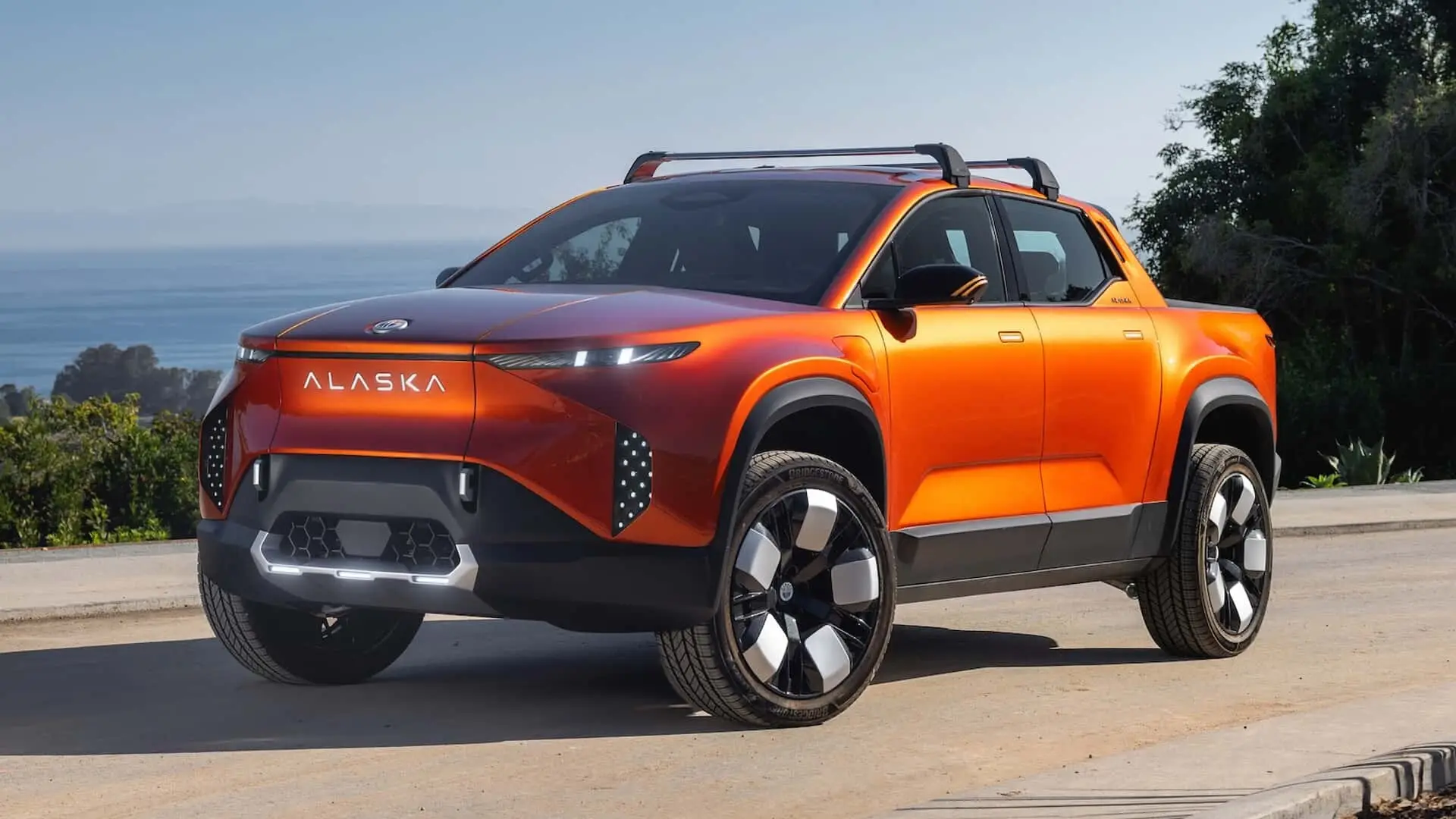Electric vehicles are rapidly evolving, offering a thrilling convergence of technology and sustainability. The Fisker Alaska and Lucid Gravity stand out in this landscape, promising impressive features and cutting-edge design. This comparison delves into key aspects of these two models, helping EV enthusiasts and potential buyers make informed decisions.
Pricing and Trim Levels: Fisker Alaska vs Lucid Gravity
Pricing and trim levels are crucial when selecting an EV as they directly impact affordability and the features available. Here's how the Fisker Alaska and Lucid Gravity stack up:
-
💰 Base Model Pricing: The Fisker Alaska starts at approximately $45,000, offering a minimalist interior and standard range. In contrast, the Lucid Gravity begins at around $80,000, boasting luxury materials and a longer range.
-
🚀 Performance Trims: The Alaska’s performance trim enhances power with all-wheel drive and a sport-tuned suspension. The Gravity's top-tier trim features over 1,000 horsepower, providing blistering acceleration and premium amenities.
Design and Exterior Features: Fisker Alaska vs Lucid Gravity
Design and exterior features not only influence an EV's aesthetic appeal but also its aerodynamic efficiency and functionality.
-
🎨 Aerodynamic Design: Fisker Alaska focuses on rugged styling with a truck-like profile, while Lucid Gravity features sleek lines and a swooping roofline for reduced drag.
-
💡 Lighting and Aesthetics: Alaska offers standard LED headlights with a rugged aesthetic, whereas Gravity integrates futuristic lighting signatures that emphasize its luxury aspirations.
-
🚪 Unique Features: Notable for its retractable roof, Alaska caters to adventure seekers. The Gravity impresses with a panoramic glass roof for a light-filled cabin.
-
📏 Exterior Dimensions: Alaska is compact, enhancing maneuverability in urban settings. Gravity, with its larger dimensions, offers increased cabin space but requires more parking space.
Interior and Cabin Space: Fisker Alaska vs Lucid Gravity
Interior comfort and space are vital in creating a pleasant driving experience, especially for long journeys.
-
🪑 Seating and Comfort: The Alaska offers seating for five with durable materials suited for rugged use. The Gravity provides luxurious seating for up to seven, with adjustable leather seats for enhanced comfort.
-
📱 Technology Integration: Alaska features a user-friendly infotainment system with basic connectivity options. In contrast, Gravity's advanced infotainment includes a large touchscreen and seamless integration with smart devices.
-
🧳 Storage and Utility: Alaska provides ample cargo space with its truck bed, making it practical for hauling. Gravity’s configurable seating and spacious trunk offer versatile storage solutions.
Performance and Acceleration: Fisker Alaska vs Lucid Gravity
Performance and acceleration are key factors for EV buyers seeking thrilling driving experiences.
-
⚡ Acceleration and Speed: Fisker Alaska achieves 0-60 mph in about 6 seconds, suitable for daily commutes. Lucid Gravity excels with a sub-3 second 0-60 mph time, delivering sports car-like performance.
-
🛞 Handling and Drive Modes: Alaska offers off-road modes, enhancing its rugged appeal. Gravity provides dynamic drive modes, adjusting for efficiency or performance.
Range and Battery Options: Fisker Alaska vs Lucid Gravity
Range and battery options determine how far you can travel on a single charge, influencing convenience and practicality.
-
🔋 Battery Options: Alaska offers a standard 75 kWh battery, while Gravity provides options up to 120 kWh for extended range.
-
🌍 Real-World Range: Alaska delivers up to 300 miles of real-world range, practical for most uses. Gravity impresses with over 400 miles, ideal for long-distance travel.
Technology and Safety Features: Fisker Alaska vs Lucid Gravity
Technology and safety features significantly enhance the driving experience, providing convenience and peace of mind.
-
🤖 Driver Assistance Features: Alaska includes adaptive cruise control and lane-keeping assist. Gravity features advanced systems similar to Tesla's Autopilot.
-
🚘 Full Self-Driving (FSD): While Alaska lacks full self-driving capabilities, Gravity integrates features that rival Tesla's FSD, aiming for enhanced autonomy.
-
🛡️ Active Safety Features: Alaska offers standard emergency braking and blind-spot monitoring. Gravity includes additional features like collision avoidance and advanced airbag systems.
-
⭐ Crash Test Ratings: Both models aim for high safety ratings, with Gravity gaining praise from Euro NCAP for its comprehensive safety suite.
Charging Options and Infrastructure: Fisker Alaska vs Lucid Gravity
Charging options and infrastructure are vital for the convenience of EV owners, impacting daily usability and travel.
-
⚡ Home Charging: Alaska offers a standard Level 2 home charging kit. Gravity includes a higher-capacity home charger for faster charging times.
-
🌍 Public Charging Networks: Lucid Gravity's partnership with Electrify America enhances public charging access, contrasting with Alaska's reliance on third-party networks.
Charging Speed: Fisker Alaska vs Lucid Gravity
Charging speed affects how quickly an EV can be ready for the road, influencing the practicality of long journeys.
-
⚡ Home Charging Speed: Alaska charges fully in about 10 hours using a Level 2 charger. Gravity achieves a full charge in approximately 8 hours with its efficient home charging system.
-
🌍 Fast Charging Speed: Gravity charges up to 80% in 20 minutes through fast chargers, faster than Alaska's 30-minute time to the same level.
-
🛠️ Third-Party Chargers: Both models are compatible with third-party fast chargers, but Gravity benefits from a wider network for quicker top-ups.
Customization Options: Fisker Alaska vs Lucid Gravity
Customization options allow buyers to personalize their EVs, enhancing ownership satisfaction.
-
🎨 Exterior Colors: Alaska offers a range of rugged earth tones. Gravity provides a palette of sophisticated metallic hues.
-
🛞 Wheel Designs: Alaska includes robust wheel designs for off-roading. Gravity offers premium alloy options for a sleek appearance.
-
🪑 Interior Trims: Alaska's interior features practical materials, while Gravity's luxurious trims include leather and sustainable materials for an upscale feel.
Conclusion: Fisker Alaska vs Lucid Gravity
-
✅ Strengths of Each Model: Fisker Alaska excels in affordability and rugged utility, while Lucid Gravity impresses with luxury, range, and performance.
-
❌ Considerations: Alaska may lack the advanced technology features of its competitor, while Gravity's higher price point could be a barrier for budget-conscious buyers.




